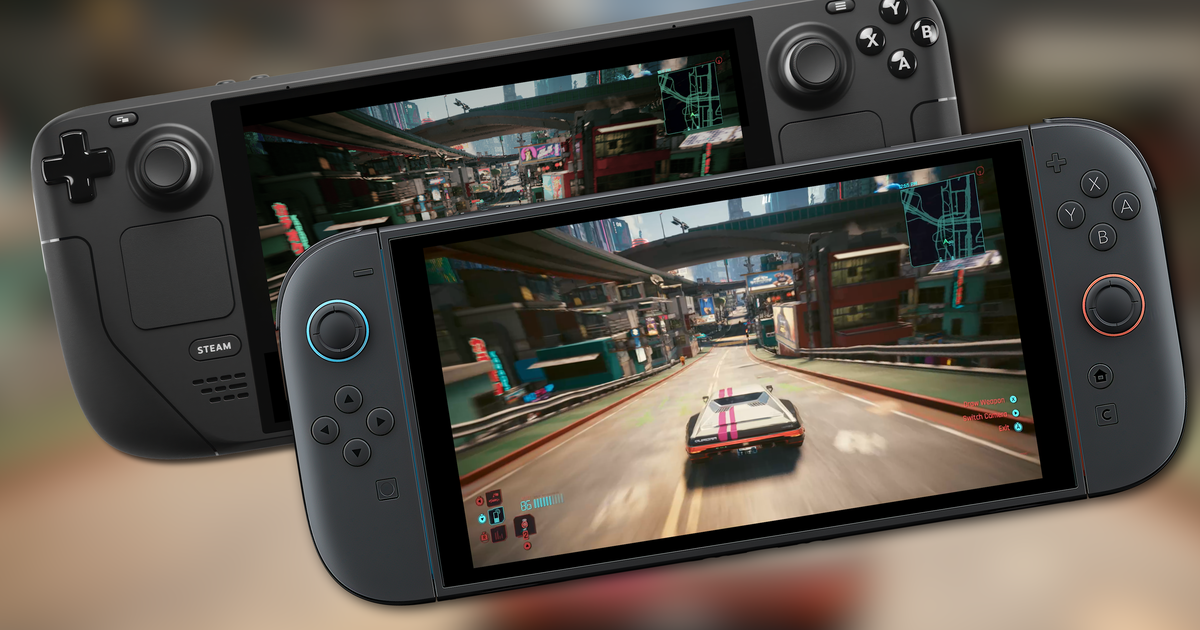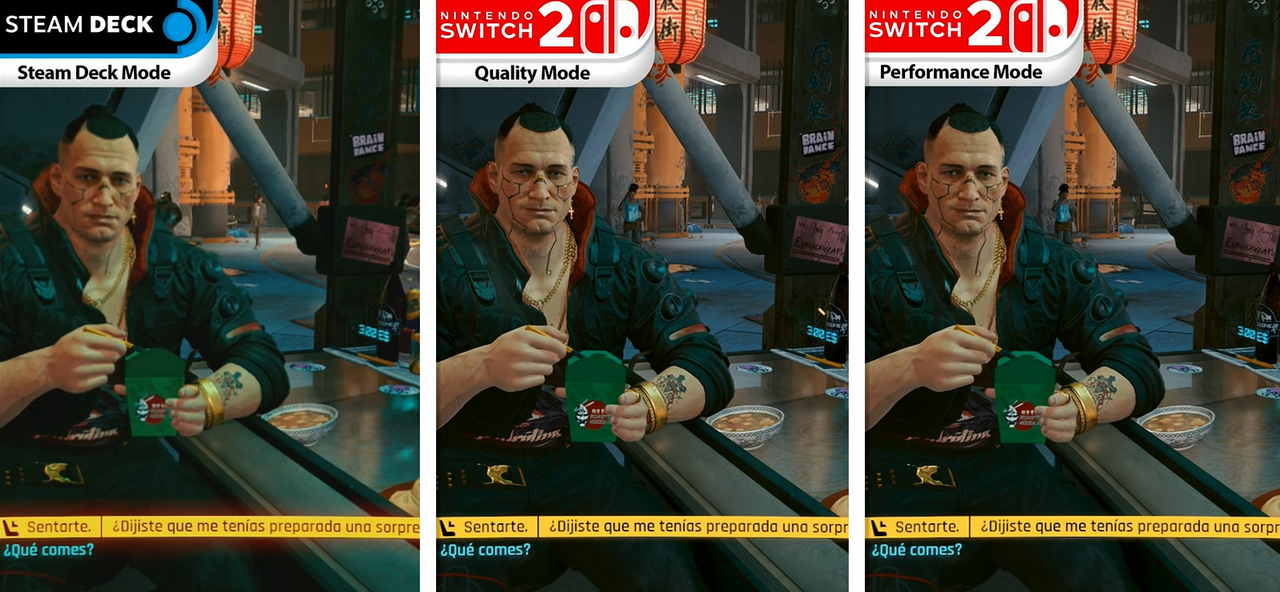Zuzu
Gold Member
Switch 2 vs PC Settings Comparison:
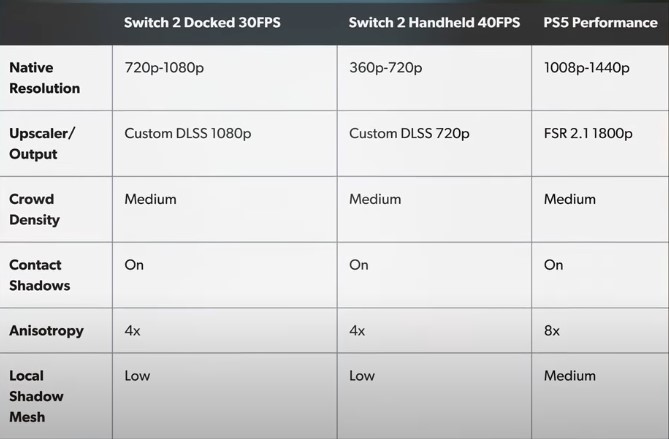
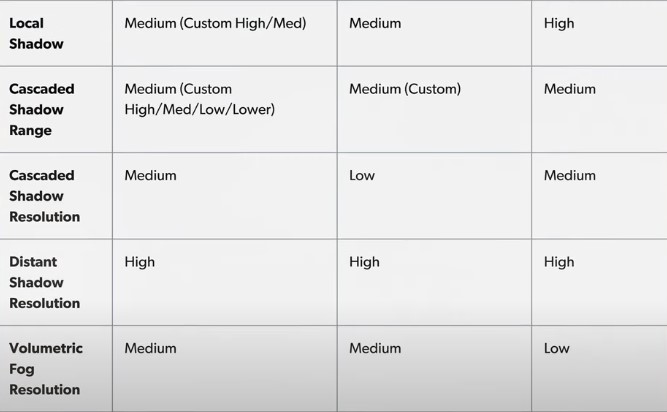
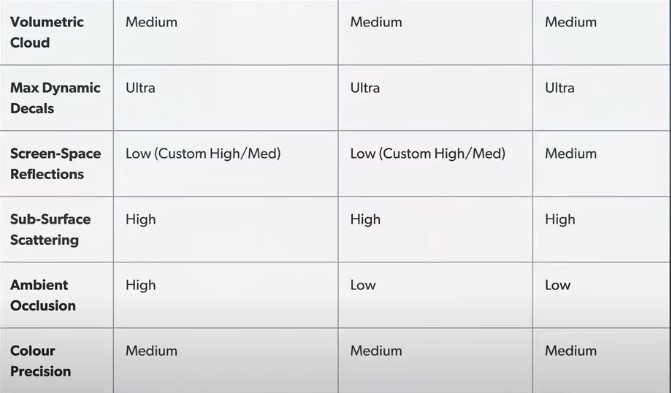

Switch 2 Docked vs Steam Deck
Switch 2 vs Steam Deck Set-up:
- Steam Deck needs to use FSR3 or XeSS to upscale to 1080p and settings are matched as closely as possible to Switch 2 settings.
Using the "Official" Cyberpunk benchmark:
- Compared to Switch 2 Docked 30fps mode (720p - 1080p DLSS), Steam Deck deliver 95% of performance using FSR3 and 89% using XeSS.
- Compared to Switch 2 Docked 40fps mode (540p - 1080p DLSS), Steam Deck deliver 91% of performance using FSR3 and 84% using XeSS.
Kabuki Streaming Run
- On the early part of the run, the Switch 2 (in 30fps docked mode) displays a missing shadow cascade but is much more consistent in hitting 30fps. Switch 2 has a lot of headroom and is pushing a higher resolution which improves image quality. It renders from 720p - 1008p in this sequence while on Steam Deck the DRS window is just 720p - 765p.
- Steam Deck averages 27.4fps for FSR3 and 26.7fps for Xess.
- Switch 2 in 40fps docked mode finds its limits in any area with a decent amount of geometry. Lowest framerates are marginally worse than quality mode. Early area may be CPU bound with Switch 2 hovering around lower 30fps. The middle section of the run Switch 2 reaches 40fps more consistently while Steam Deck remains at lower 30fps. Steam Deck has pixel counts at 540p - 756p whereas corresponding shots on Switch 2 give us 630p - 900p.
The Beast in Me sequence
- Switch 2 in Docked 30fps mode is closer overall to 30fps but drops considerably when more enemy cars are in play
- Switch 2 in Docked 40fps mode continues to have an advantage in lighter areas, but long stretches in more detailed area see all Switch 2 and Steam Deck FSR3 & XeSS all play out with similar frame rates. This may suggest a CPU limitation for both consoles. Switch 2 does run at a higher resolution in these areas though.
- Switch 2 is likely using 16-17w and Steam Deck is running at 24w-25w power.
Switch 2 Portable vs Steam Deck
Settings Info- Comparison is made to Switch 2 Portable Quality (30fps) mode.
- Settings can't be matched between the two consoles only approximated.
- Steam Deck can't be set to output an 810p resolution as the Switch 2 is doing in quality mode. The best that can be done is to use FSR3 and a 900p output resolution with a 50%-90% DRS to give the same 450p - 810p DRS window.
Kabuki Streaming Run
- Most of this run shows that the two consoles run fairly closely but the Switch 2 shows a bit of instability from the 30fps target. Towards the end of the run the Deck momentarily loses its 30fps lock suggesting a CPU advantage for the Steam Deck.
- Steam Deck is using 24.5w but Switch 2 is using 8.9w.
The Beast in Me sequence
- Switch 2 shows a lot more drops from 30fps with a low of 23fps. The Deck is smoother with fewer fps drops and only dipping into the late 20s.
- When Deck is set to run at a similar power draw (9.1w) the Deck's performance drops to 9.2fps. On the Kabuki test the average fps is 13 while Switch 2 runs this sequence at mostly locked 30fps with a big resolution advantage.
Last edited:



